#Three Colours: Red
Explore tagged Tumblr posts
Text

Three Colours: Red (1994) | dir. Krzysztof Kieślowski
#three colours: red#three colors: red#trois couleurs: rouge#trzy kolory: czerwony#krzysztof kieślowski#irene jacob#cinematography#films#movies#screencaps
91 notes
·
View notes
Text

Irène Jacob in "Three Colors: Red" (1994)
93 notes
·
View notes
Text
The metaphisical Love of Sauron's and Galadriel's hands
"They part the theater with a semitouch, their hands abstractly close-up, separated only by the glass of the car window. This marvelous cinematic gesture communicates so much more than simple character and plot resolution. The abstract nature of the shot amplifies the significance of it, suggesting love of the highest, metaphysical order." The Films of Krzysztof Kieślowski: The Liminal Image, Joseph G. Kickasola, pp. 317-318
I was reading this book for my thesis when i came about this lines and something in my head clicked at "suggesting love of the highest, metaphisical order". And in that moment I thought about Galadriel and Sauron (indeed, why doing your work when you can think of them, right?). This kind of love, which is metaphysical and it's shown through a simple gesture such as an almost-tuch. Just to give you some context, the text refers to Three colours: Red, which is the last film of the "Three Colours tryology" and of Krystof Kieslowski's career. It's about a young woman who casually meets an old retired judge and, slowly, they create some kind of connection (this is a very summarized plot, but there's more to it than this). Anyway, the frame the text refers to is this one:

This is the last time Valentine, the young woman, and the judge see each other. Kieslowksi is a real master of visual storytelling, and this is a blatant exemple. This short frame converge, as the text tells us, a ralethionship which was meant to be, but never was. In a previous scene the judge says to Valentine: "maybe, I never met the woman... maybe, you're the woman I never met". This non-meeting hangs there between them, between their hands, separeted by a glass, suspended in a timeless and spaceless moment. In this void their story exists, not in the real world, but in an alternate, separeted one. Sadly, is a world of imagination, so there isn't a possibility for a concrete connection, at least in the present. Now, there's more to say about Red, but I'll stop there because I don't think you're interested in it (but if you like cosmic connection and complicated carachters, you're welcome to watch this masterpice). What I want to address here are the words of Kickasola: "the abstract nature of the shot amplifies the significance of it, suggesting love of the highest, metaphysical order", then he adds: "at the same time, the glass symbolizes a barrier: a romantic connection reached for, but impossible". I think this words are easily applied to Sauron's and Galadriel's relathionship. So, let's analyzed how their hands are shot.
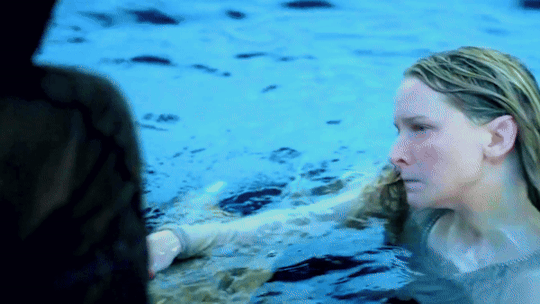
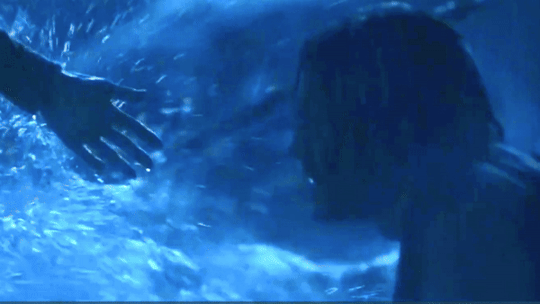
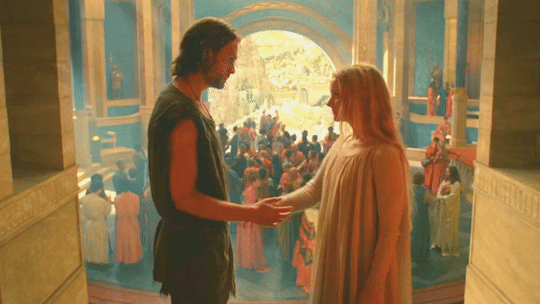
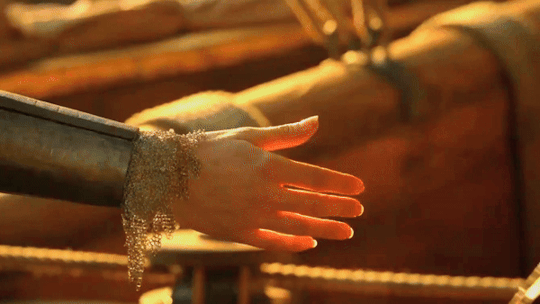
In this frames their hands don't touch, but they enlace each other's arms as a sign of trust. This is the first form of connection they share, still, they keep their distance: neither of them dares to touch the other's hand, neither for a shake. So, they create a barrier.

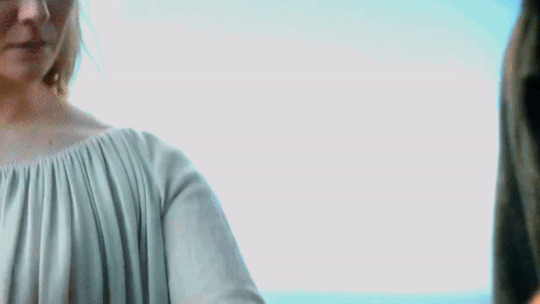
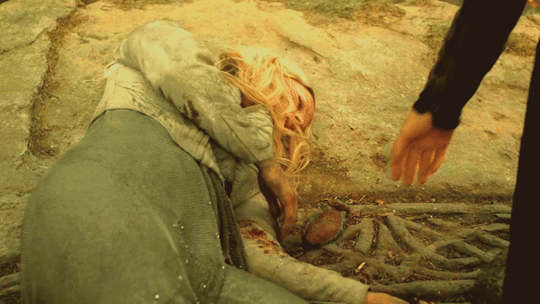
Here, their hands touch, but there's always an object between them. Every one of this objects rapresent an idea or a desire which are important to them: hope (the simbol of the Southlands king), promises (Finrod's dagger) and power (the nine rings).
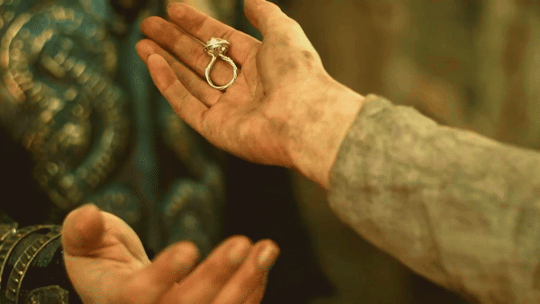
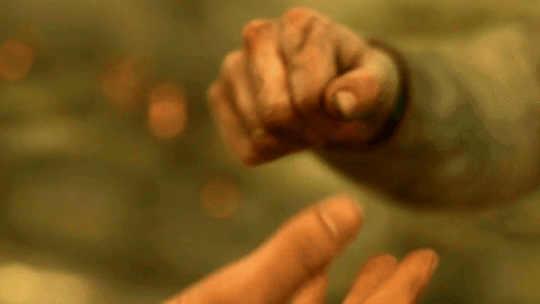
In these their hands are near, but never touch. The illusion is shattered, the promise is lost and, even if Sauron tries, he's not able to reach for Galadriel's hand.
I think is interesting that they never hold each other's hand, nor voluntary, nor involontary, nor for necessity. All their approaches are shaped first by formalities, then by ideals, finally by betrayals. Their connection happens in this space, better, in this non-space where they can hide what they feel, but will never say. Love is relegated in a place beyond phisical reach, hung in the metaphisical domain: is in the space between their arms, in the hold of Finrod's dagger, in the distance that separates their hands when Sauron try to catch her from falling. I think the last frame, more than the others, explain this. Like the one in Red, the nature of the shot is abstract, suspended in the air. The background is out of focus, their hands clearly visible. But, unlike in Kieślowski's movie, the distance here is accentuated not only by the fact that Sauron doesn't reach Galadriel, but also by how their hands are shot: they never overlap, so they can't touch neither in the metaphisical space. So is Love over, even in the abstract dimension? No, it persists, willingly or unwillingly, in the outer world, that may become visible (but still not phisical) if the theory about the bond made by Morgoth's crown is correct. This is shown by Galadriel's hand reaching for the wound = for the invisible connection:

Interestingly enough, the phisical manifestation of said love (the phisical touch) happens in an outer space, separeted from reality: in Red, it happens in a theater, the ultimate fictional realm:
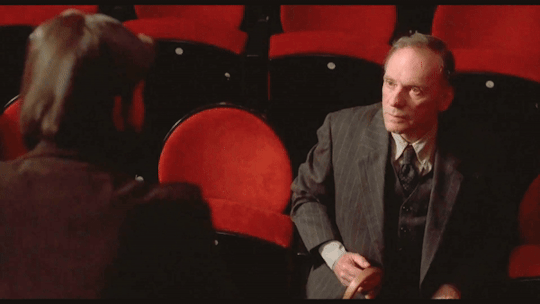
in trop, this happens in an illusion, Sauron's illusion:
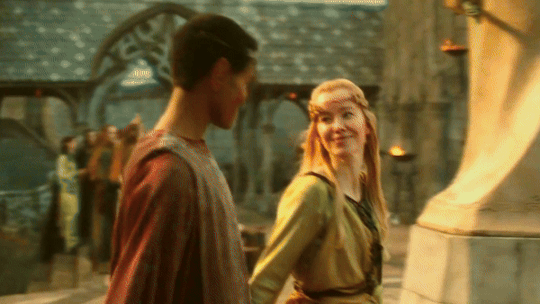
Like Valentine and the judge, their love can't be sustained by reality, it wolud be crushed by hopes, ideals and power, but is unlatched from reality, alive in a place that trascend time and space. They both feel it, but will they acknowledge this? Only time will tell.
With this I won't mean that their love is not real, but that is bigger than the real world they are in (regardless from their behavior and choices)
Disclaimer: this is just my interpretation of Galadriel and Sauron relationship, it can be fallacious and is not a universal truth.
#don't be scared by the length it's mostly images#cosmic connection#that's why i write love with the capital L#I don't think it's simply a romance#but it's romantic#not the bastardized meaning#but as the literary current meant it#I could make a post about the bastardization of the romantic word lol#I hope I make sense#hope this post makes sense#I just wanted to show you Kieślowski's genius#and how a story about metaphisical love is made#trop writers take notes#it's about pictures and their meanings#with just a frame you can show us their love#now I'm bubbling sorry#I should work on my thesis#scusa Kieślowski#saurondriel#haladriel#galadriel x sauron#galadriel#sauron#trop#three colours: red#my gifs#meta
67 notes
·
View notes
Text








Trois couleurs: Rouge (1994). dir. Krzysztof Kieślowski
#trois couleurs: rouge#three colours: red#krzysztof kieślowski#film#jean-louis trintignant#irène jacob#1990s#french cinema#movie quotes
55 notes
·
View notes
Text



Krzysztof Kieślowski, {1994} Trois couleurs: Rouge (Three Colors: Red)
#film#gif#Krzysztof Kieślowski#trois couleurs: rouge#three colours: red#three colors: red#trois couleurs#three colours#three colors#irene jacob#krzysztof kieslowski#1994#landscapes#feature length#switzerland#france#poland#colour#sun#photos in films#portraits#1990s
42 notes
·
View notes
Text

#movies#polls#three colours: red#three colours red#three colours#90s movies#krzysztof kieślowski#irène jacob#jean louis trintignant#frédérique feder#jean pierre lorit#samuel le bihan#have you seen this movie poll
38 notes
·
View notes
Text



Trois couleurs: Rouge (1994) - Krzysztof Kieślowski
#three colours: red#trois couleurs: rouge#krzysztof kieslowski#film#film still#watched in st louis#criterion channel#watched in october 2024
35 notes
·
View notes
Text












Trois couleurs: Rouge | Three Colours: Red (1994) dir. Krzysztof Kieślowski cine. Piotr Sovociński
#Trois couleurs: Rouge#Three Colours: Red#Krzysztof Kieślowski#Piotr Sovociński#Irène Jacob#Jean-Louis Trintignant#Jean-Pierre Lorit#screencaps#cinema#film#cinematography#movies#film stills#my screengrabs#french film
37 notes
·
View notes
Text



Three Colours: Blue (1993), Three Colours: White (1994) Three Colours: Red (1994). Written/co-written, produced and directed by Polish filmmaker Krzysztof Kieślowski. Starring Juliette Binoche, Julie Delpy, Irene Jacob.
#Three Colours: Blue#Three Colours: White#Three Colours: Red#juliette binoche#julie delpy#Irène Jacob#Krzysztof Kieślowski
23 notes
·
View notes
Text


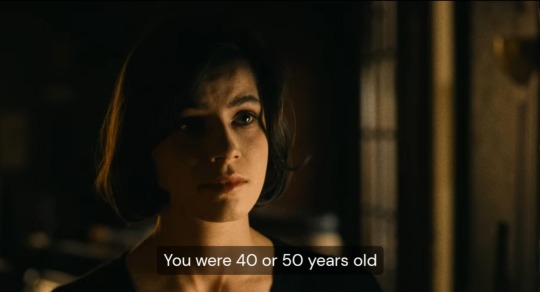

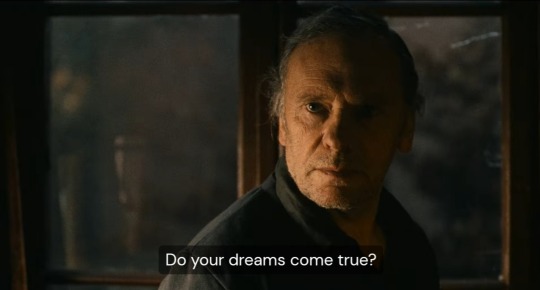

Three Colours: Red (1994)
#jean louis trintignant#when he pulled up in his little old car to the fashion show. ok icon#three colours: red#trois couleurs: rouge#krzysztof kieslowski#irene jacob#mine
119 notes
·
View notes
Text












Three Colours: Red (1994)
15 notes
·
View notes
Text
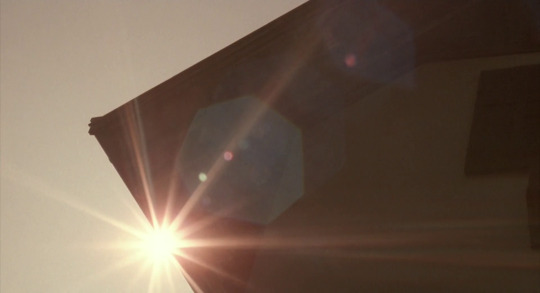

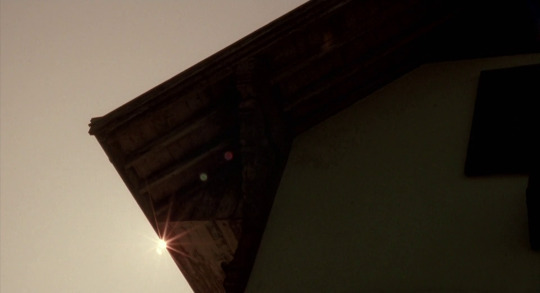

Three Colours: Red (1994) | dir. Krzysztof Kieślowski
#three colours: red#three colors: red#trois couleurs: rouge#trzy kolory: czerwony#krzysztof kieślowski#cinematography#films#movies#screencaps
96 notes
·
View notes
Text

Irène Jacob in "Three Colors: Red" (1994)
81 notes
·
View notes
Text
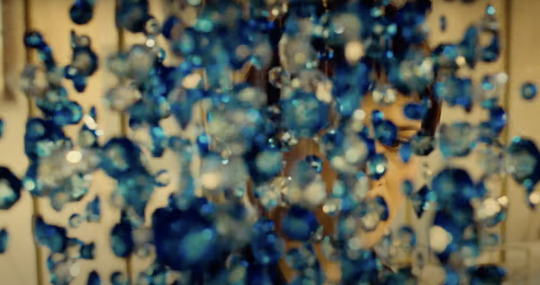
Trois Couleurs: Bleu
Director Krzysztof Kieslowski Stars Juliette Binoche, Benoît Régent, Charlotte Véry France/Poland/Switzerland 1993 Language French, a little bit of Polish and Romanian (with English subtitles) 1hr 38mins Colour Weirder-than-you-maybe-think film about grief
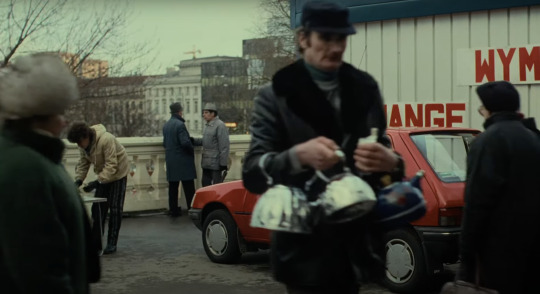
Trois Couleurs: Blanc
Director Krzysztof Kieslowski Stars Zbigniew Zamachowski, Julie Delpy, Janusz Gajos, Jerzy Stuhr Switzerland/France/Poland 1994 Language Polish, French (with English subtitles) 1hr 32mins Colour
Terrific dark comedy about Poland not long after the fall of Communism
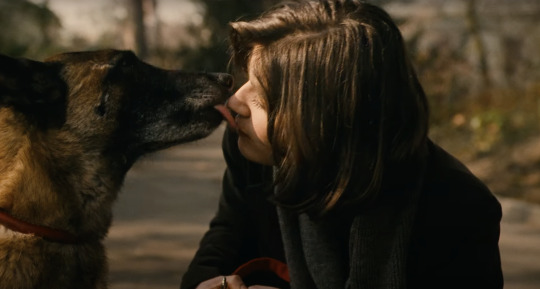
Trois Couleurs: Rouge
Director Krzysztof Kieslowski Stars Irène Jacob, Jean-Louis Trintignant, Jean-Pierre Lorit, some excellent dogs France/Switzerland/Poland 1994 Language French (with English subtitles) 1hr 39mins Colour
Possibly worth it just to hear how ‘chewing gum’ sounds in French
Just thinking about the Three Colours films takes me back to a time of people asking (and expecting the answer to be yes) if you’d read The Shipping News or Miss Smilla’s Feeling For Snow, a pre-fully-fragmented-mediascape time when there seemed to a sort of shared upper-middlebrow culture, or at least among people I knew. And in that mid-‘90s moment, Three Colours was a very big thing.
Apart from anything else, it was a smart piece of marketing, a trilogy announced from the start but not based on anything already existing, all released in a period of just over a year, with a fairly blatant selling point being the idea that each instalment stars a gorgeous French actress (we’ll get back to exact truth of that.)
Here was a hugely respected (if not massively watched) director, Krzysztof Kieslowski, who had laboured heroically under the constraints of Communism and could now make the most of both artistic freedom and French cinema budgets etc. Whatever the reason, the concept certainly caught a mood.
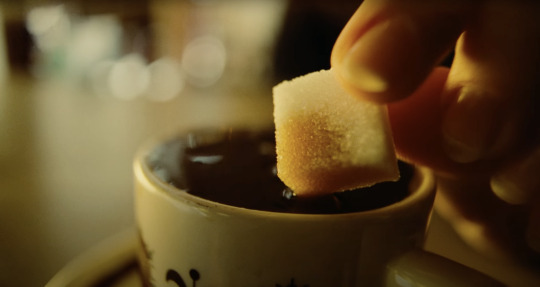
But although there are nice little connections between the films (admittedly much easier to spot when you watch on consecutive nights than months apart), one of them is very much not liked the others, and I’m wondering whether there was a bit of Trojan horsing going on.
Blue (the first one) and Red (the third) are the matching pair, philosophical dramas in which the main character is a beautiful young woman with a dark bob, the action is triggered by a car accident, the dialogue is mostly in French and we’re here to ponder grief, loneliness, morality, mortality and art.
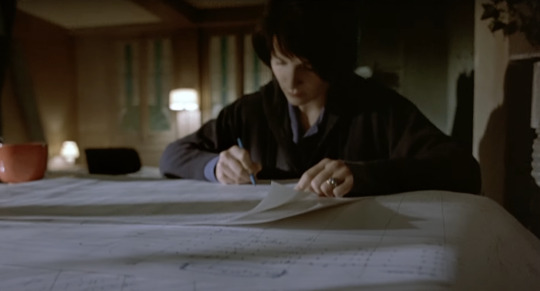
In Blue, Juliette Binoche plays Julie, who has just lost her daughter and her husband, a famous composer.* There are rumours that she was the actual talent in the couple – will she complete his last great work or stick to her attempt at living an anonymous no-baggage life in the middle of Paris?
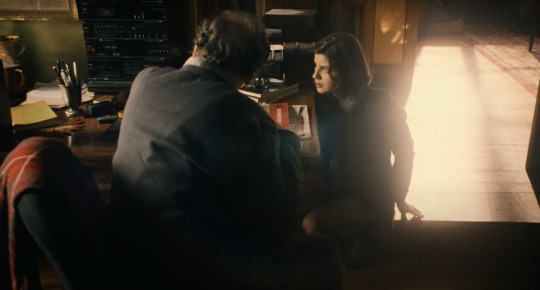
In Red, model Valentine (Irène Jacob) stumbles into the life of a cranky retired judge (Jean-Louis Trintignant) and is both creeped out and sorry for him, and they slowly get to know each other. It takes place in and just outside Geneva.
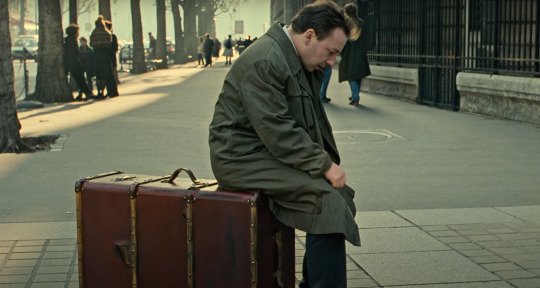
White is not a drama, the main character is not (despite what some of the posters suggest) a beautiful young woman and most of the dialogue is not in French. No, White is a comedy about post-Communist Poland in which the main character is Karol Karol (Zbigniew Zamachowski) a little dumpling of a bloke. The tone, the look, the pace, the casting, are all radically unlike Blue and Red. This is a film in which (spoilers I guess) a man smuggles himself back into Poland by hiding in a suitcase in the hold of an airliner. And while classical music is grandly important in the other two, in White the key musical moments are Karol playing a comb-and-paper. Blue and Red are mood pieces light on plot, whereas White has multiple schemes stacked on top of each other.
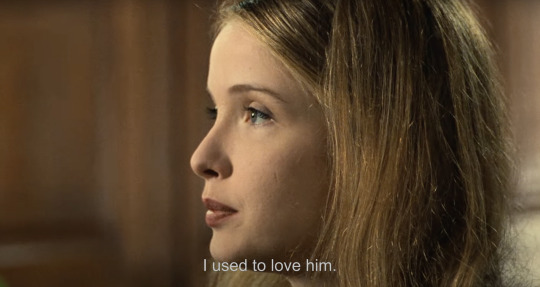
In brief outline, Karol, a talented hairdresser, is divorced by his French wife Dominique (Julie Delpy), ends up homeless and busking in the Paris metro, makes it (just about) back to Poland and (like many of his countryfolk at the time) tries to get rich quick. My take, for what’s it worth, on what we’re seeing is that if you take a country where, in a completely dysfunctional Communist economy people had habitually (and often out of necessity) ignored the rules, when you replace that with a free market, those people aren’t going to suddenly start scrupulously obeying regulations or let tax officials know how many dollar bills they have stashed under the mattress, etc…
Blue and Red remind me of Hirokazu Kore-eda’s 2019 film La Vérité (which, as it happens, also stars Juliette Binoche) – foreign director comes to France (and Switzerland, in the case of Red) and makes something that feels as close as possible to the work of an actual French person. Whereas White is emphatically a Polish film made by Polish people about Poland.
Now, as in 1994, White is easily my favourite of the three. It’s just more my kind of thing, funny and absurd and surprising. But that’s not to knock Blue and Red, both absorbing films that are a fair bit weirder than I had remembered. (Not to mention how full-on 1990s Blue is with all the colour filters used – and this is a good five years before Out Of Sight, for instance.)
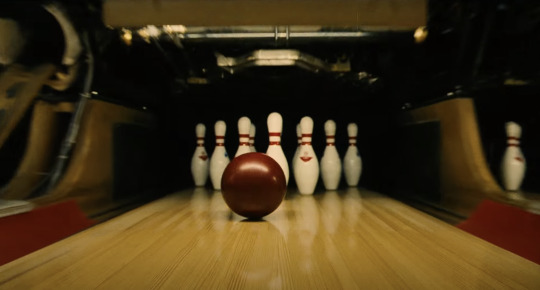
It's the 1990s. so there's a bowling scene, of course (Red)
Red, in particular, is better than it had become in my imagination. I understand why this is – it’s easy in memory to reduce it to ‘pretty girl stirs the heart of old grump back to life’ but the film is stranger and smarter than that. (There’s also an odd subplot that fits more with Kieslowski’s Polish stuff.) And the ending really works for me.
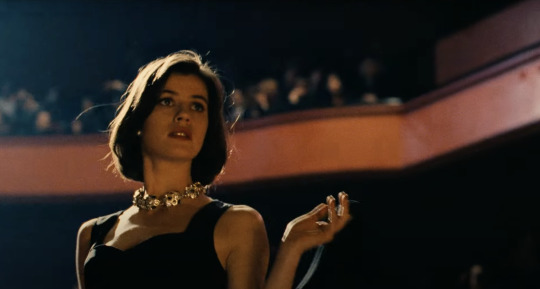
A few stray points: 1) Binoche is only a couple of years older than Jacob, but the trilogy has them at very different life stages. I bumped against this a few times in Blue – at one point her character says, ‘I’m 33’, which on the one hand doesn’t seem old enough for everything that’s meant to have happened in her life and on the other, feels considerably older than she looks. (Binoche was 29 and could easily pass for 25.)
2) The build-up to the car accidents in both Blue and Red gets what British TV viewers will think of as the full Casualty treatment: we’re fully alerted of what’s about to happen. I guess there’s a workings-of-fate notion there, but feels clumsy and unnecessary to me.
3) Love the almost (but not quite) identical scene that happens in each movie.
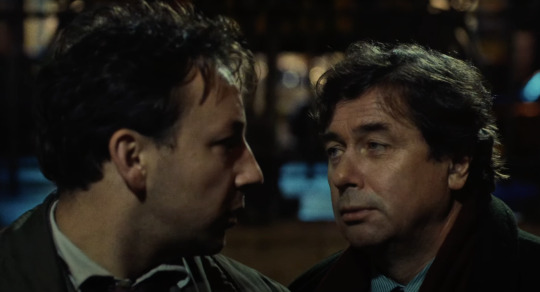
4) Love Janusz Gajos and Jerzy Stuhr as the depressed friend and the brother in White. Also, I should say that Julie Delpy is excellent in the film, it’s just if you’re expecting to see her on screen for the bulk of the running time, you’ll feel shortchanged.
5) These are beautiful films. 6) Look at those running times! That’s how you do it.
7) Do I have any idea at all about the films are trying to say about liberté, égalité, fraternité? Not a Scooby, folks, not a Scooby.
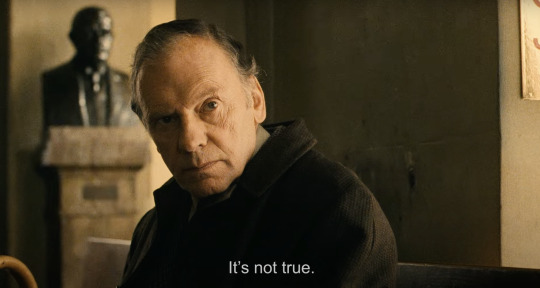
I guess my question going into this rewatch was whether the Three Colours films were the kind of glossy, superficially serious arthouse product that get great reviews at the time but fade with the passing of their moment of fashion? I hope I’ve made clear that White was in fact never that kind of film – loved it then, love it still. But Blue and Red also, I’d argue, still stand up.
*Which had me thinking: are there any living composers as famous as this guy is meant to have been? Even in France? Even in the 1990s?
2 notes
·
View notes
Text


Trois couleurs: Rouge (1994). dir. Krzysztof Kieślowski
#trois couleurs: rouge#three colours: red#krzysztof kieślowski#film#irène jacob#1990s#french cinema#movie quotes
11 notes
·
View notes
Text






Three Colours: Red Dir. Krzysztof Kieślowski 1994
#my screenshots#films#Three Colours: Red#Krzysztof Kieślowski#favorite films#90s films#visuals#French films#Red#movies#dreamcore#film caps#landscapes
2 notes
·
View notes